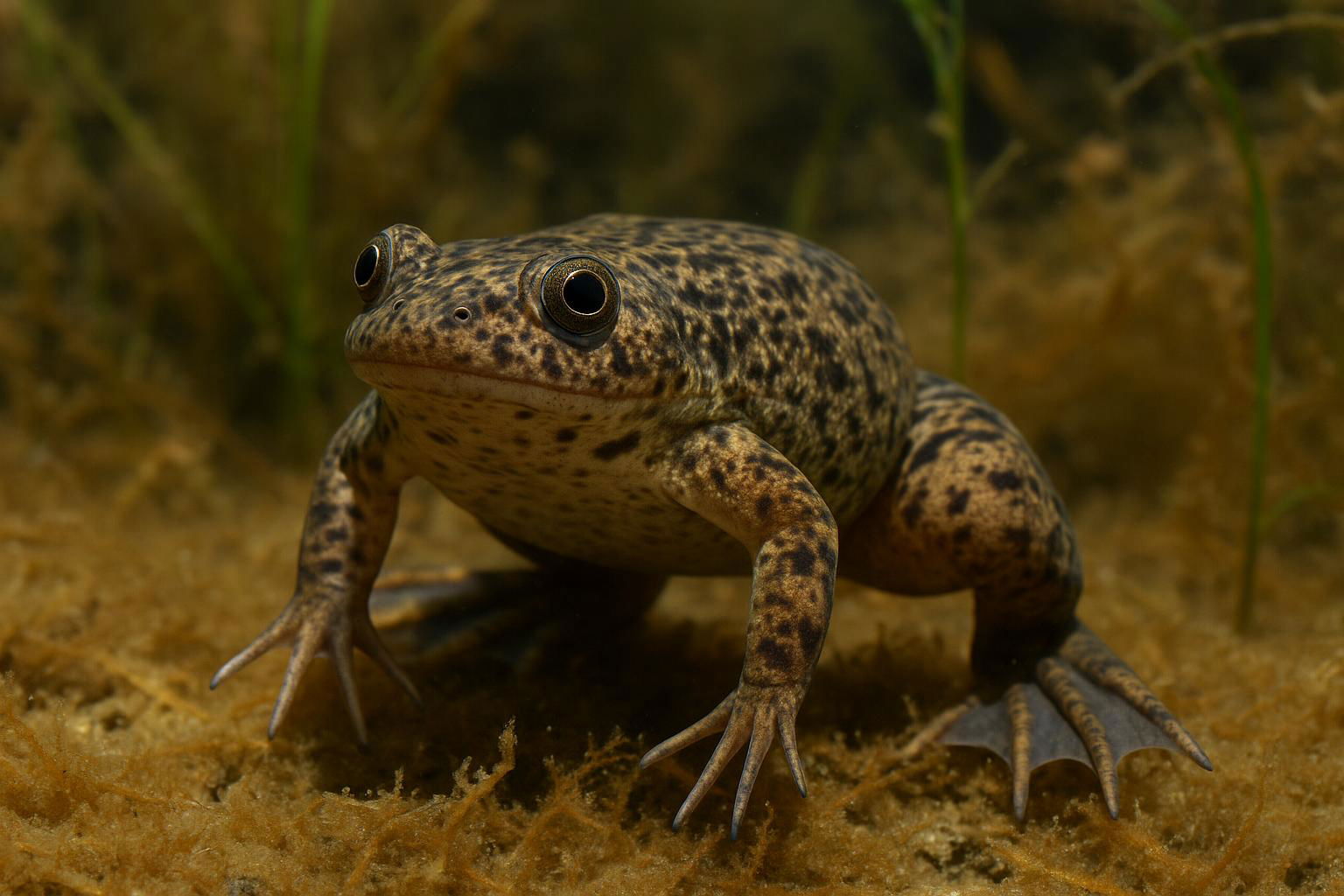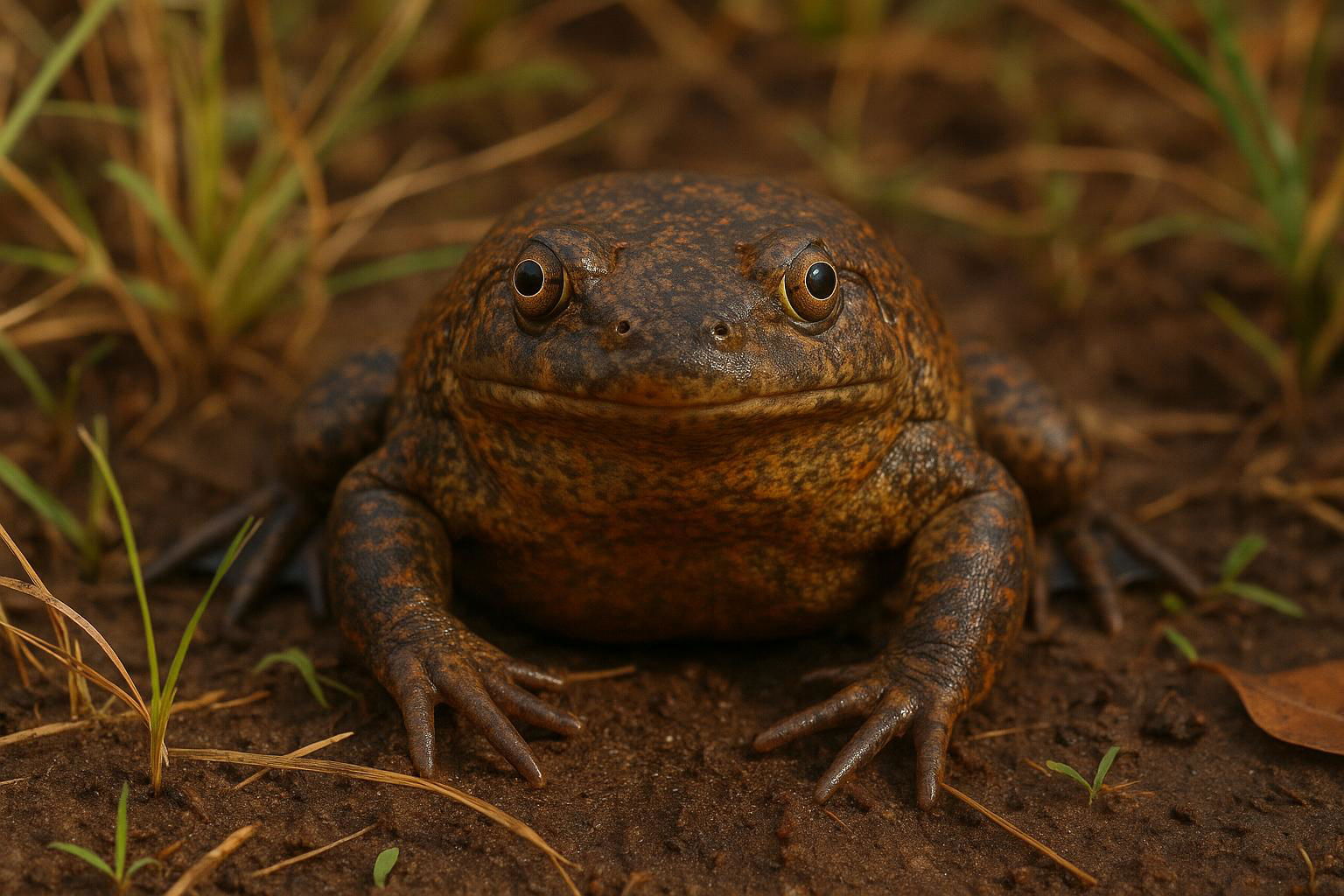
Western Clawed Frog
Xenopus tropicalis
The Western Clawed Frog, scientifically known as Xenopus tropicalis, is a small aquatic frog native to West Africa, recognized for its smooth, slippery skin and remarkable regenerative abilities. Unlike its more renowned relative, Xenopus laevis, the Western Clawed Frog offers a smaller size and shorter developmental cycle, which has made it a popular model organism in scientific research, particularly in genetics and developmental biology. Typically measuring around 4 to 5 centimeters in length, this species has a flattened body and fully webbed hind feet, which aid its almost entirely aquatic lifestyle. Its skin ranges in color from olive to dark brown, often adorned with lighter spots or mottled patterns that provide excellent camouflage in its natural habitat, which includes a variety of freshwater environments like ponds, marshes, and slow-moving streams. As an opportunistic feeder, the frog's diet mainly consists of small invertebrates, insects, and detritus. Known for its vocalizations, particularly the male's distinctive mating calls, Xenopus tropicalis plays a vital ecological role within its ecosystem, balancing prey and predator dynamics. Despite being resilient, habitat loss and water pollution pose significant threats to its populations, emphasizing the importance of conservation efforts to ensure the survival of this fascinating amphibian.

 All Species & Breeds
All Species & Breeds
 Highland Cattle
Highland Cattle
 Miniature Donkeys
Miniature Donkeys
 All Species Directory
All Species Directory
 Highland Cattle in Virginia
Highland Cattle in Virginia
 Miniature Donkeys in Texas
Miniature Donkeys in Texas














